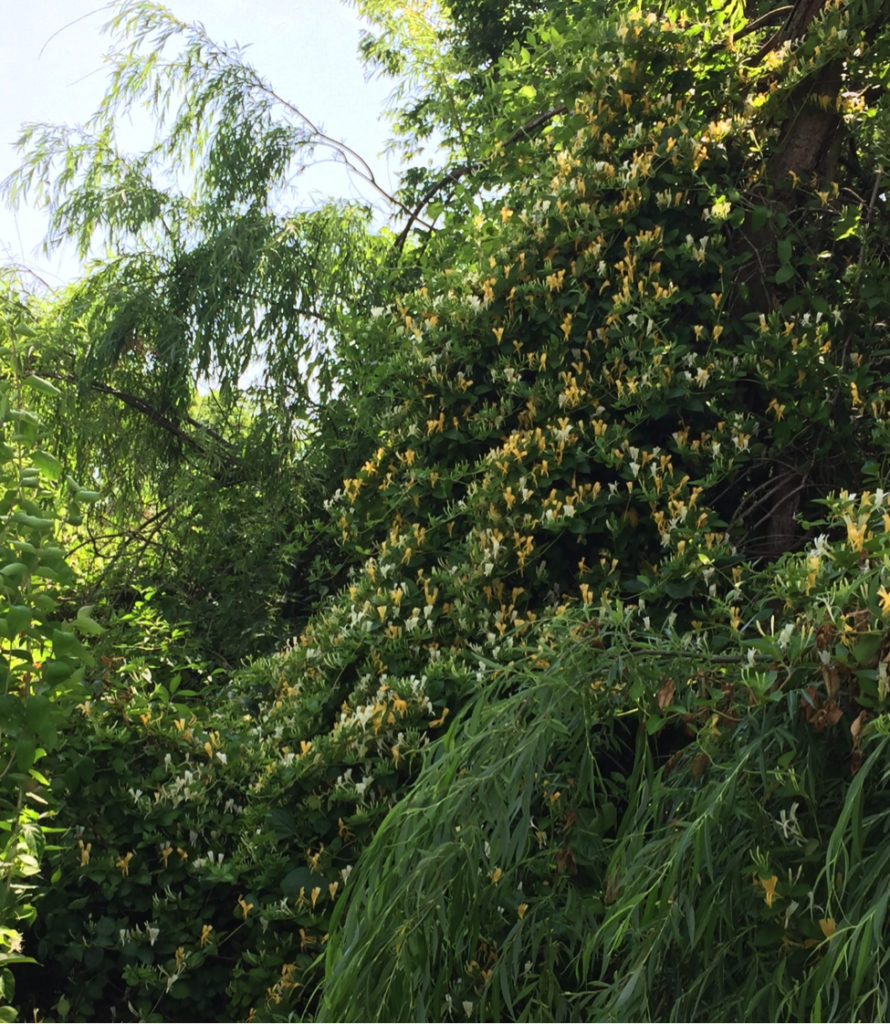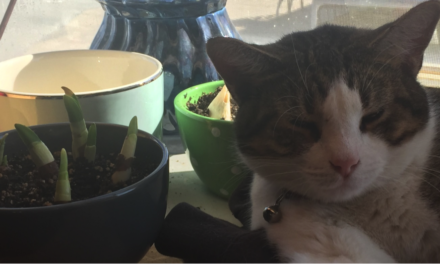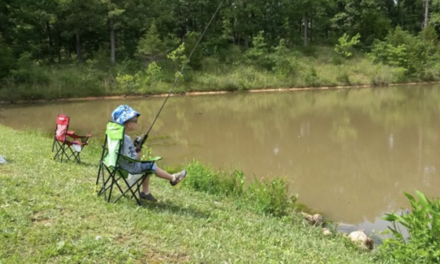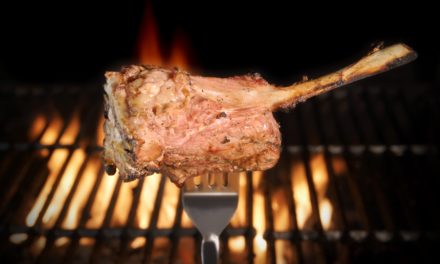Isn’t this a lovely woodland scene? The spring bluebells carpet the floor of these woods with a splash of color that only happens once a year. But with the invasion of Japanese Honeysuckle this landscape may soon be changed forever.
Japanese honeysuckle is a sprawling semi-evergreen vine that often retains its leaves in the winter. It flowers from May to June. The flowers start white or pink but turn yellow as they age. The real problem is the fruit it produces in September-October. Glossy blackberries about ¼ inches long that contain 2 to 3 seeds are the primary way it lands in new sites. Birds eat the seeds and spread the seeds of this invasive exotic vine.
This aggressive plant was introduced into the United States in 1806 as an ornamental plant, but it quickly escaped from cultivation into thickets, rocky slopes, ditches, openings and borders of woods. It is most prolific when it finds an open patch of sunlight, as the runners will develop where they touch the soil, forming colonies of new plants. This plant loves to invade open areas of native plants.
In a few years, it can completely cover herbaceous and understory plants, and climb trees to reach the forest canopy. When this happens, it may alter the understory bird populations. It can become established in openings in woods or in openings caused by falling trees or any natural area that allows additional light into the understory.
Honeysuckle has such dense growth that it blocks the sun from small trees and native vegetation along with inhibiting the nesting of birds. What bird could penetrate the thick growth of honeysuckle?
This creeping mat of Japanese honeysuckle is working towards choking the life from this majestic weeping willow. We will be chopping it out of this tree but only after we have a sprayer filled with Tordon, which is most effective on this invasive species.

The best time to take out Japanese Honeysuckle is in late winter or early spring as the leaves of the plant stay green throughout winter and are the first vegetation to show up in spring. It is imperative that you don’t just cut them down. If you do, it’s like you are giving them a “green light” to reproduce! They will sprout like crazy! That’s why you have to use a one-two punch and not only cut them down but paint the newly cut base of the plant with the Tordon. It will take it straight to the root system for complete removal of this weed. This is an example of when the limited use of chemicals is warranted as the Japanese Honeysuckle has a stronghold across the entire southeastern region.
What to do after you remove the honeysuckle? Why not plant some native varieties like milkweed to help the pollinators? The key to success with any invasive species is to nip it in the bud, taking it out when it’s manageable. That’s often easier said than done. Jim and I will be working on restoring our neighbor’s homestead that is covered in invasive interlopers.
Enjoy life! It’s short! Ann May






